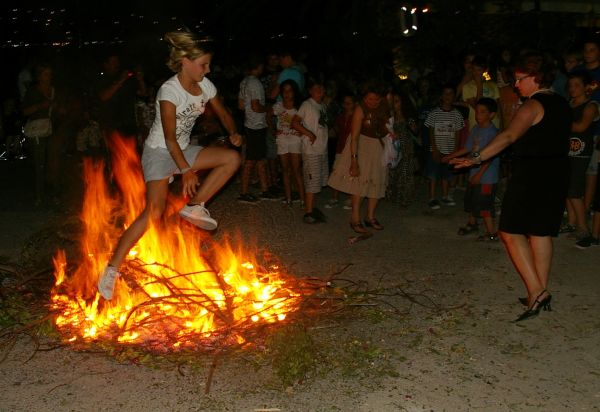The island of Crete, the largest in Greece, is known for its rich history, diverse landscapes, and vibrant culture. Among its many traditions, the celebration of the summer solstice stands out as a time of joy, reflection, and connection to nature. The summer solstice, marking the longest day of the year, has been celebrated for millennia in Crete, blending ancient customs with modern festivities. These celebrations reflect the island’s deep-seated appreciation for natural cycles and community spirit.
Historical Roots of the Summer Solstice
The summer solstice, occurring around June 21st, holds significant historical and cultural importance. In ancient times, it was celebrated as a time of renewal, fertility, and abundance. The Minoans, one of the earliest civilizations on Crete, likely marked this day with rituals and ceremonies that honored the sun and the earth’s bounty.
- Minoan Influence: Archaeological evidence suggests that the Minoans, who flourished between 2000 and 1450 BCE, had a profound connection to the sun. Their palatial complexes, such as the famous Palace of Knossos, align with solar events, indicating a sophisticated understanding of astronomical phenomena.
Modern Celebrations
Today, Cretan summer solstice celebrations are a blend of ancient traditions and contemporary festivities. These celebrations take place in villages and towns across the island, involving music, dance, feasting, and various cultural activities that bring communities together.
Bonfires and Jumping Over Fire
One of the most enduring solstice traditions in Crete is the lighting of bonfires. This practice, rooted in ancient customs, symbolizes purification and the warding off of evil spirits. People gather around the bonfires, and young and old alike participate in the daring act of jumping over the flames.
- Symbolism: Jumping over the fire is believed to bring good luck and protect against misfortune. It is also seen as a rite of passage, particularly for young people, symbolizing bravery and the transition from spring to summer.
- Community Spirit: The bonfire events are community gatherings, where families and neighbors come together to celebrate, share stories, and enjoy each other’s company.
Music and Dance
Music and dance are integral parts of Cretan summer solstice celebrations. Traditional Cretan music, characterized by the sounds of the lyra (a three-stringed instrument) and the laouto (a type of lute), fills the air as people gather to dance.
- Pentozali: One of the most popular dances performed during the solstice is the pentozali, a lively and energetic dance that is often performed in a circle. It is a symbol of unity and continuity, reflecting the cyclical nature of the seasons.
- Mantinades: These are traditional Cretan rhyming couplets, often improvised and sung during festivities. They add a poetic and humorous element to the celebrations, showcasing the islanders’ creativity and love for oral traditions.
Feasting and Traditional Foods
Feasting is a central part of the summer solstice celebrations. The abundance of summer produce is showcased in a variety of traditional dishes that are shared among family and friends.
- Grilled Meats and Vegetables: Lamb, goat, and pork are commonly grilled, accompanied by fresh vegetables such as tomatoes, cucumbers, and peppers. The use of local herbs and olive oil enhances the flavors, highlighting the island’s culinary traditions.
- Cheeses and Breads: Traditional Cretan cheeses, such as graviera and mizithra, are enjoyed alongside freshly baked bread and paximadia (twice-baked barley rusks).
- Honey and Pastries: Sweet treats, often featuring honey, nuts, and fruits, are a staple of the solstice feast. Dishes like loukoumades (honey-soaked doughnuts) and kalitsounia (cheese pastries) add a sweet end to the meal.
Connection to Nature and Reflection
The summer solstice is also a time for reflecting on the natural world and one’s place within it. Many Cretans use this time to engage in activities that connect them with nature, such as hiking, swimming, and gathering wild herbs.
- Herb Gathering: The solstice is believed to be an auspicious time for gathering medicinal herbs, which are thought to be at their peak potency. Herbs like dittany, sage, and thyme are collected and used for teas, remedies, and cooking throughout the year.
- Stargazing and Storytelling: As the sun sets and the longest day turns to night, stargazing becomes a popular activity. Elders often share stories and myths related to the stars and constellations, passing down ancient knowledge and cultural heritage.
Conclusion
Cretan summer solstice celebrations are a beautiful blend of ancient customs and modern festivities, reflecting the island’s rich cultural tapestry and deep connection to the natural world. These celebrations are not just about marking the longest day of the year; they are a testament to the enduring spirit of community, tradition, and the appreciation of life’s cycles. Whether it’s the sight of a lively bonfire, the sound of traditional music, or the taste of a delicious feast, the summer solstice in Crete is a time of joy, reflection, and renewal that resonates with both locals and visitors alike.


